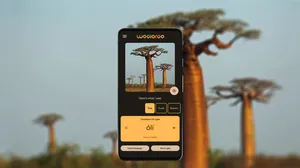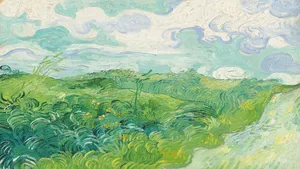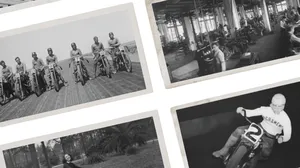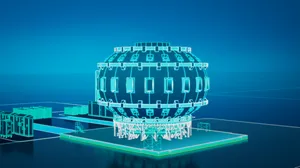Heartbeat of the Earth: interpreting our planet’s data
What can jellyfish teach us about climate change, what happens to disposed plastic and what species will be lost as temperatures rise? As these questions mount, artists are helping us to see and understand what the data makes clear.
A year ago, and in collaboration with Google Arts & Culture we (the United Nations Framework Convention on Climate Change - UNFCCC) launched “Heartbeat of the Earth” — four interactive and educational experiments by artists exploring scientific climate data.
Today, as we approach Earth Day, we’re sharing a new set of climate experiments created by artists Giorgia Lupi, Felicity Hammond, Cristina Tarquini and Sey Min. They invite you to learn about the challenges our climate faces through creative data visualizations and interactive scenarios that help us learn more about these topics.
Plastic Air - What happens to plastic when we dispose of it?
Plastic degrades into smaller and smaller pieces called microplastics which then end up within the air we breathe. Data artist Giorgia Lupi (Pentagram) and her team visualize these particles, giving you a lens through which to "see" and to explore the plastic particles that are ever-present in the atmosphere around you. Explore the impact "Plastic Air" is having on the environment and our own health too.

Medusae: What can jellyfish teach us about climate change?
Digital visual artist Cristina Tarquini uses pointcloud visualization to take you into the Mediterranean Ocean. Discover why jellyfish are blooming and the clues their increased population can tell us about our changing climate.

Impact filter: What species will be lost as sea levels rise?
Artist Sey Min has created an impact filter for you to explore & discover what we might lose as temperatures rise. Sey Min has trained a machine learning model on thousands of Google Search images, clustering by the type of species. As you increase the temperature you can discover what happens to 62 different animal species — and reveal the new anthropocene species, or waste, we leave behind.

The Lagoon - a fictional coastal city
In this durational eight-minute video collage, artist Felicity Hammond depicts an imaginary coastal city that slowly submerges in water over 80 years. The landscape, created with approximately 50 photographs of locations around the world that are most at threat of flooding due to climate change, is erased by water until completely submerged.

These artist projects translate complex climate science data and allow us to experience hard data through the senses. The projects will be showcased at United Nations Climate Change events throughout the year and will add a new dimension to the conference experience.
Find out more via g.co/heartbeatoftheearth or on the free Google Arts & Culture app for iOS and Android.






